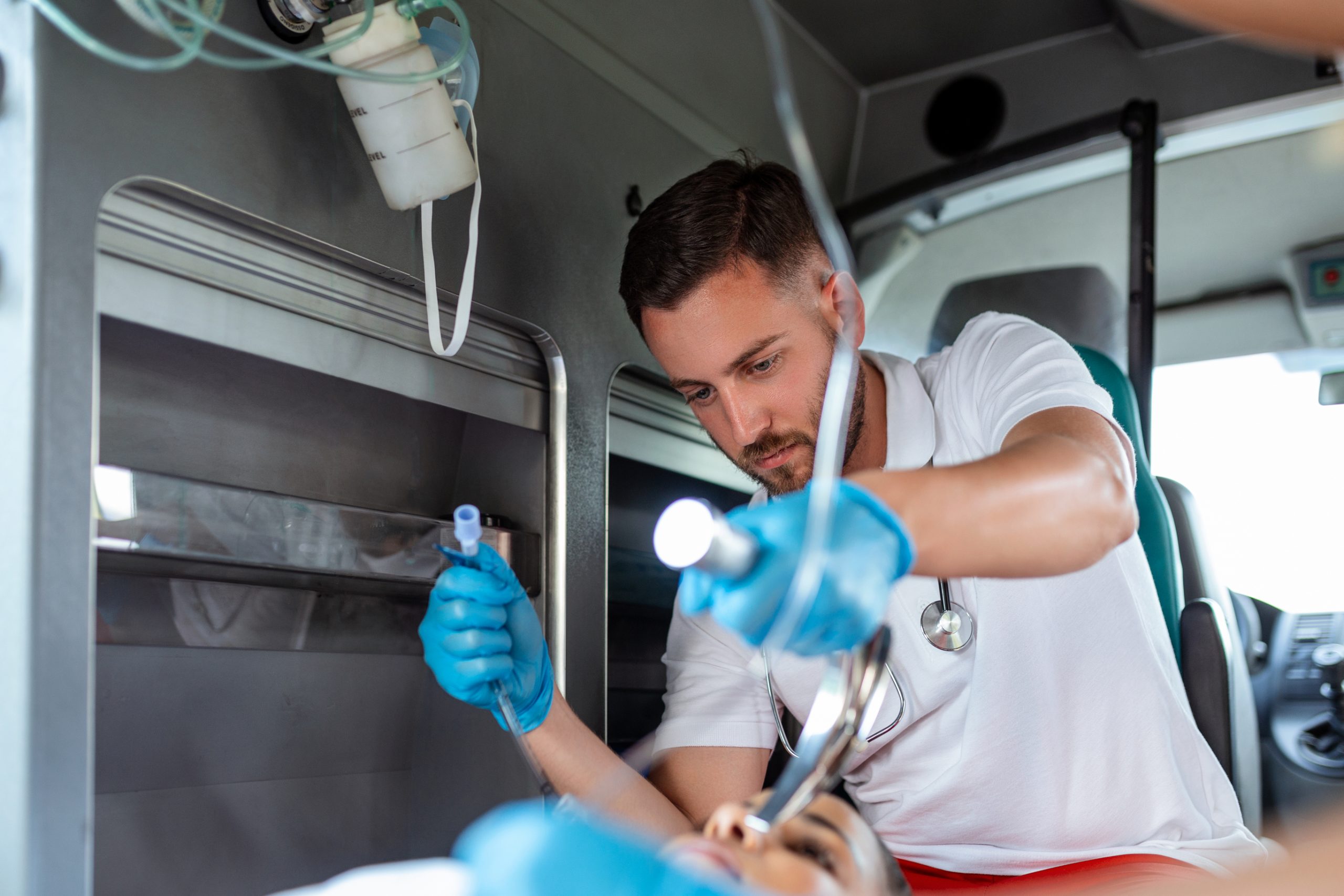

A study led by Vanderbilt University Medical Center compared the two types of laryngoscopes used in tracheal intubation of critically ill patients and found that using a video laryngoscope increased successful intubation on the first attempt when compared to using a direct laryngoscope, which had been the standard approach for nearly a century.
The DEVICE (DirEct Versus VIdeo LaryngosCopE) experiment, which was published today in the New England Journal of Medicine, evaluated two devices used to intubate patients in the ED and ICU: a direct laryngoscope and a video laryngoscope.
Tracheal intubation has been performed for nearly a century using a direct laryngoscope, a simple instrument consisting of a handle and a blade with a light. However, video laryngoscopes have become more popular in the last 20 years. To better sight of the voice cords, the device features a camera near the tip of the blade. A clinician uses a video laryngoscope to view the endotracheal tube placement on a screen.
“More than 1.5 million critically ill adults undergo tracheal intubation outside of an operating room in the U.S. each year, and about 80% of those are with a direct laryngoscope because the video devices are more expensive,” said Matthew Semler, MD, MSc, assistant professor of Medicine in the Division of Allergy, Pulmonary and Critical Care Medicine, and co-senior author of the study, along with Jonathan Casey, MD, assistant professor of Medicine.
“Without evidence to tell us whether the video laryngoscope is worth the additional cost, their uptake into practice has been incomplete,” he said.
“In the ED and ICU failure to intubate the trachea on the first attempt occurs about 20-30% of the time, leading to an increased risk of life-threatening complications, such as low oxygen levels in the blood, changes in blood pressure, cardiac arrest, even death,” Semler said.
“But until now, there hasn’t been definitive data to tell us whether a video laryngoscope is better than a direct laryngoscope for intubation of critically ill adults. Although video laryngoscopes are known to improve view, it has been unclear until now if they improve the ease with which a tube is passed. A few small and conflicting studies have been published, and the lack of definitive evidence has slowed adoption.”
“Even in places where both devices are available, including at Vanderbilt, many physicians have believed they were equivalent and use of a direct laryngoscope remains common,” Semler said.
The study enrolled 1,417 patients from 17 emergency departments and intensive care units in 11 hospitals across the country. The main question was whether one device is superior to another for correctly inserting the breathing tube on the first try.
“In our randomized trial successful intubation on the first attempt occurred in 71% of patients in the direct laryngoscope group and 85% of patients in the video laryngoscope group, a 14% absolute increase,” said Matthew Prekker, MD, MPH, assistant professor of Emergency Medicine and Internal Medicine at Hennepin County Medical Center and first author of the study.
The research group also looked at a secondary outcome—complications.
“Other complications, such as cardiac arrest, occur more frequently when a breathing tube is not successfully placed on the first try,” Casey explained. “We hope that using a video laryngoscope will help prevent these rare but important events, but proving this would require a larger trial.”
“What we learned from this trial is that, in the future, the really significant difference in placing a breathing tube on the first attempt is enough to make the video laryngoscope the first-line device for intubating critically ill adults in the ED and ICU.”
According to Semler, the study also demonstrates that the video laryngoscope appears to be especially useful for less experienced clinicians.
“Some tracheal intubations are done by anesthesiologists who have intubated thousands of patients over their lifetime, but many in the ED and ICU are done by physicians who have less overall experience intubating. The video laryngoscope appears to be especially helpful when the person performing the intubation is less experienced. It basically doubles the chances of putting a breathing tube in successfully on the first try, probably because of the ability to very clearly see the vocal cords.”
More research is needed, according to Semler, to compare the two types of video laryngoscopes—one fashioned like a direct laryngoscope and the other hyperangulated with a curved blade.
“Now that we know we should be using the video laryngoscope, the next logical question is which type. We hope that future research can answer that question.”
more recommended stories
 Vagus Nerve and Cardiac Aging: New Heart Study
Vagus Nerve and Cardiac Aging: New Heart StudyKey Takeaways for Healthcare Professionals Preserving.
 Cognitive Distraction From Conversation While Driving
Cognitive Distraction From Conversation While DrivingKey Takeaways (Quick Summary) Talking, not.
 Fat-Regulating Enzyme Offers New Target for Obesity
Fat-Regulating Enzyme Offers New Target for ObesityKey Highlights (Quick Summary) Researchers identified.
 Spatial Computing Explains How Brain Organizes Cognition
Spatial Computing Explains How Brain Organizes CognitionKey Takeaways (Quick Summary) MIT researchers.
 Gestational Diabetes Risk Identified by Blood Metabolites
Gestational Diabetes Risk Identified by Blood MetabolitesKey Takeaways (Quick Summary for Clinicians).
 Phage Therapy Study Reveals RNA-Based Infection Control
Phage Therapy Study Reveals RNA-Based Infection ControlKey Takeaways (Quick Summary) Researchers uncovered.
 Pelvic Floor Disorders: Treatable Yet Often Ignored
Pelvic Floor Disorders: Treatable Yet Often IgnoredKey Takeaways (Quick Summary) Pelvic floor.
 Urine-Based microRNA Aging Clock Predicts Biological Age
Urine-Based microRNA Aging Clock Predicts Biological AgeKey Takeaways (Quick Summary) Researchers developed.
 Circadian Control of Neutrophils in Myocardial Infarction
Circadian Control of Neutrophils in Myocardial InfarctionKey Takeaways for HCPs Neutrophil activity.
 E-Cigarette Use and Heart Attack Risk in Former Smokers
E-Cigarette Use and Heart Attack Risk in Former SmokersKey Takeaways for Clinicians and Nurses.

Leave a Comment